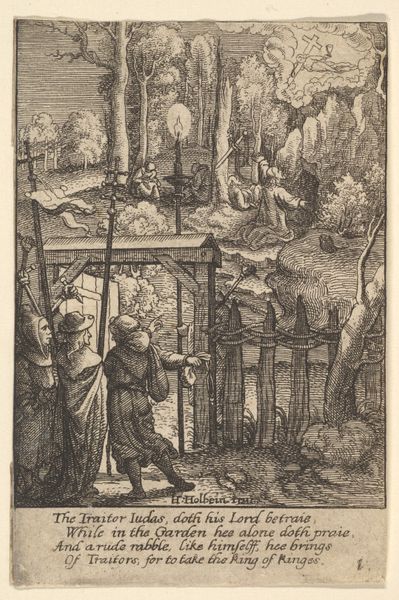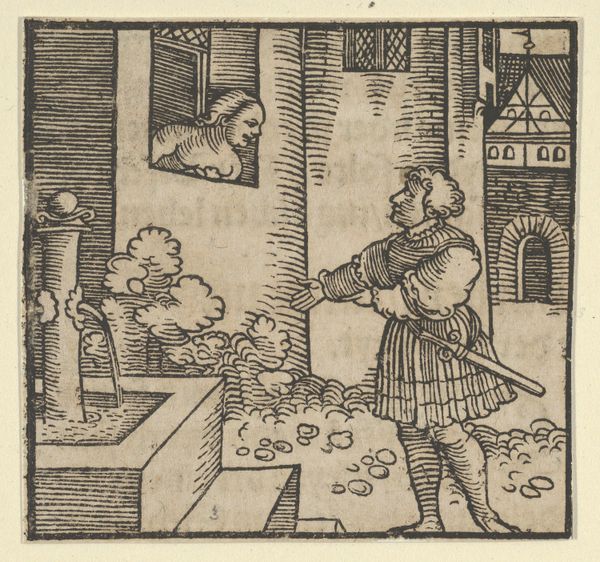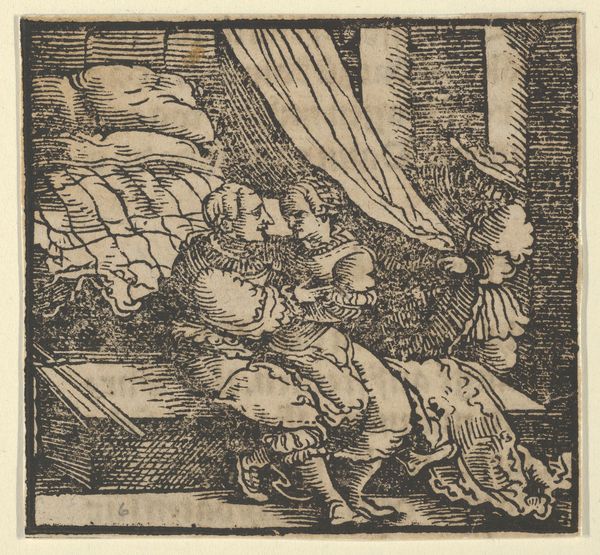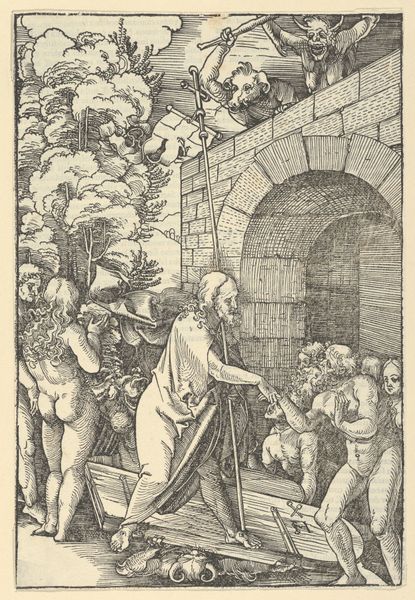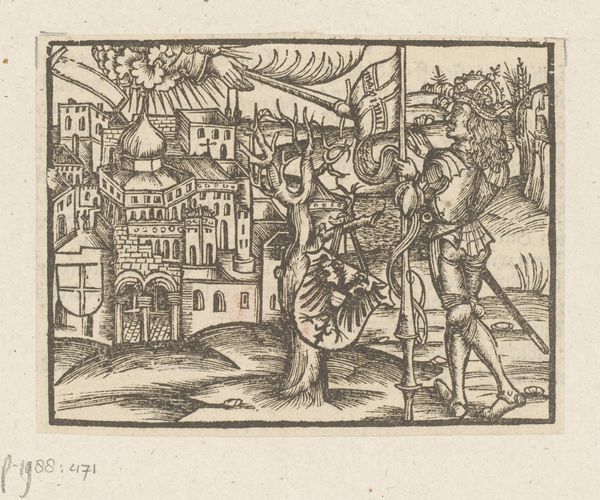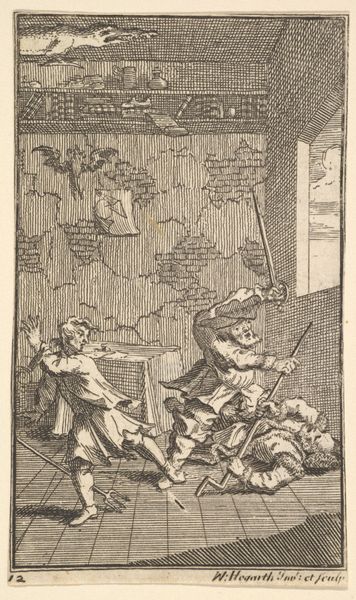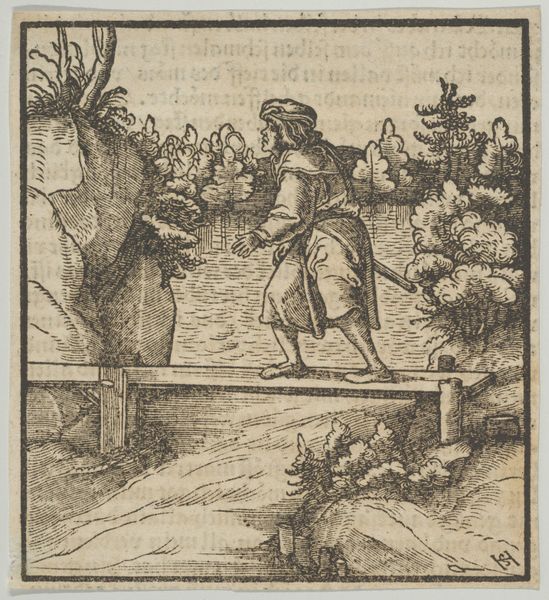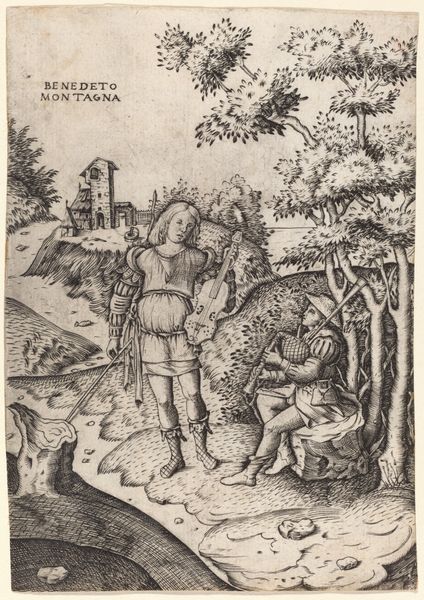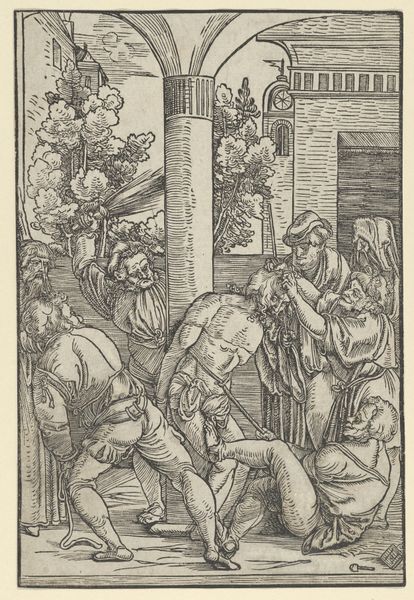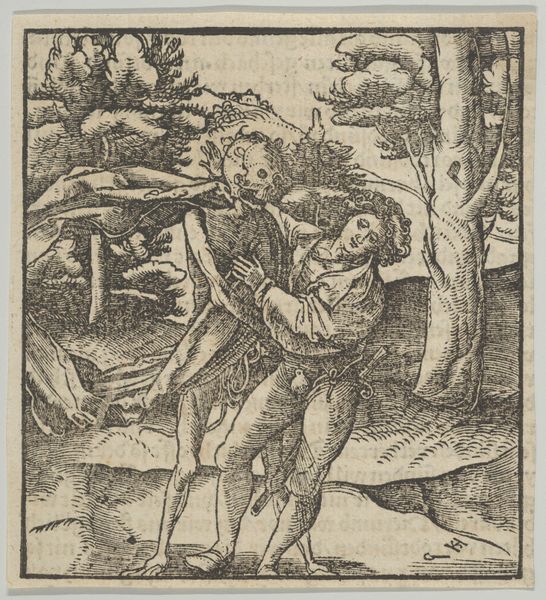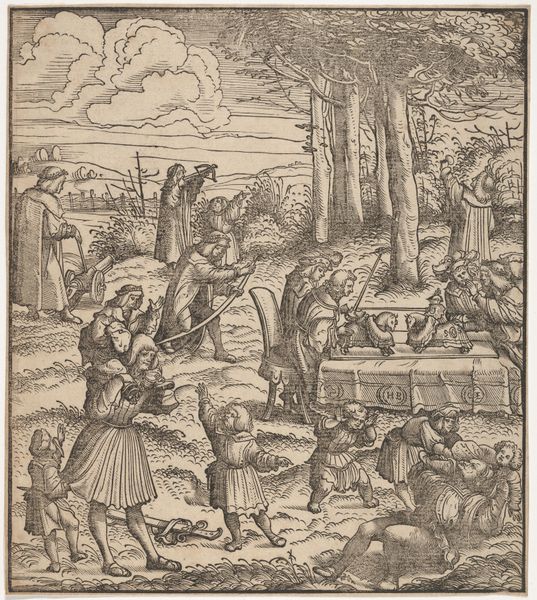
Rinaldo Robbed, Standing in front of the Widow's House, from The Decameron 1534
0:00
0:00
drawing, print, woodcut, architecture
#
drawing
#
pen drawing
# print
#
landscape
#
figuration
#
woodcut
#
genre-painting
#
history-painting
#
northern-renaissance
#
architecture
Dimensions: Sheet: 2 3/4 × 2 7/8 in. (7 × 7.3 cm)
Copyright: Public Domain
This tiny woodcut, made by Hans Schäufelein around 1500, illustrates a scene from Boccaccio's Decameron, ripe with symbolic gestures. Note Rinaldo's outstretched hand, pointing accusingly; a universal gesture that transcends time, recalling ancient Roman judicial poses and biblical depictions of blame. Consider how this accusatory gesture mirrors others throughout art history—from frescoes in Pompeii to Renaissance paintings. This symbolic language evolves, yet the core message of accusation remains potent, reflecting a collective, subconscious memory of assigning fault. The widow at the window is like an omen; her image, as an archetype of vulnerability, is juxtaposed with danger. Think of similar figures in folklore and art—lurking in thresholds, embodying both the promise of shelter and the threat of the unknown. In each, the widow figure engages our deepest fears and desires, becoming a powerful force in our understanding of human fate. As such, symbols cycle through time, always resurfacing, always evolving.
Comments
No comments
Be the first to comment and join the conversation on the ultimate creative platform.

